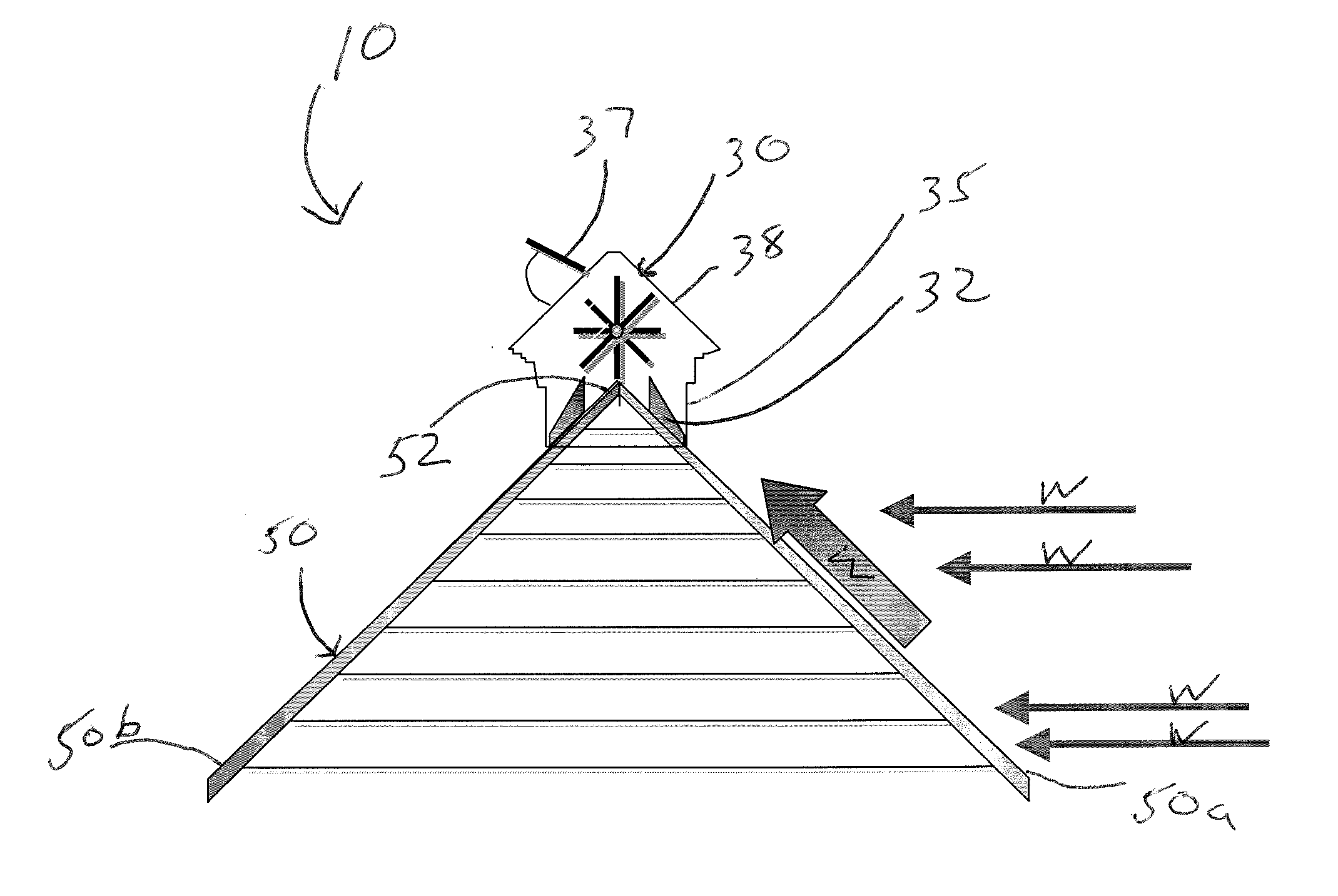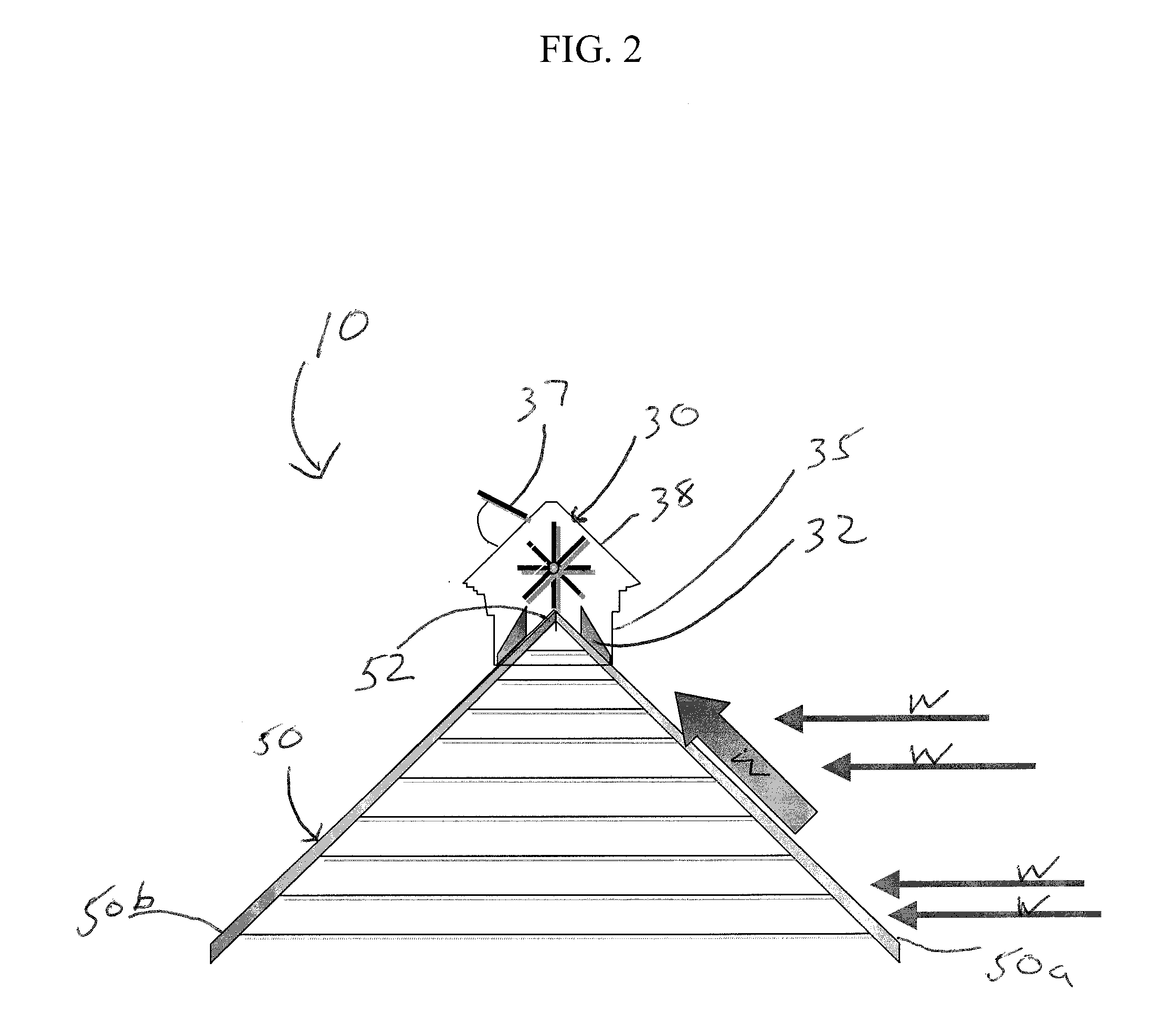Roof ridge wind turbine
a wind turbine and roof technology, applied in the direction of wind motors with parallel air flow, wind energy generation, perpendicular air flow, etc., can solve the problems of large blades, noise generation, and air pressure imparted to the roof structure, and achieve the effect of increasing the wind speed, reducing the air pressure, and increasing the velocity
- Summary
- Abstract
- Description
- Claims
- Application Information
AI Technical Summary
Benefits of technology
Problems solved by technology
Method used
Image
Examples
example
[0029]Table 1, below shows the calculated wind energy available utilizing the roof ridge wind turbine. The performance of a 20-foot long roof ridge wind turbine with one-foot wide blades is compared to a tower mounted five-foot diameter propeller type wind turbine at a light wind speed of 10 miles per hour.
TABLE 1Wind Turbine comparisonWindRoofSpeed,Swept Area,EffectWind EnergyMiles / hourSq. metersFactorAvailable, Watts5 ft diameter101.80100propeller typeRoof ridge type101.81100Roof ridge type101.81.5344Roof ridge type101.82816Roof ridge type101.82.51595
PUM
 Login to View More
Login to View More Abstract
Description
Claims
Application Information
 Login to View More
Login to View More - R&D
- Intellectual Property
- Life Sciences
- Materials
- Tech Scout
- Unparalleled Data Quality
- Higher Quality Content
- 60% Fewer Hallucinations
Browse by: Latest US Patents, China's latest patents, Technical Efficacy Thesaurus, Application Domain, Technology Topic, Popular Technical Reports.
© 2025 PatSnap. All rights reserved.Legal|Privacy policy|Modern Slavery Act Transparency Statement|Sitemap|About US| Contact US: help@patsnap.com



